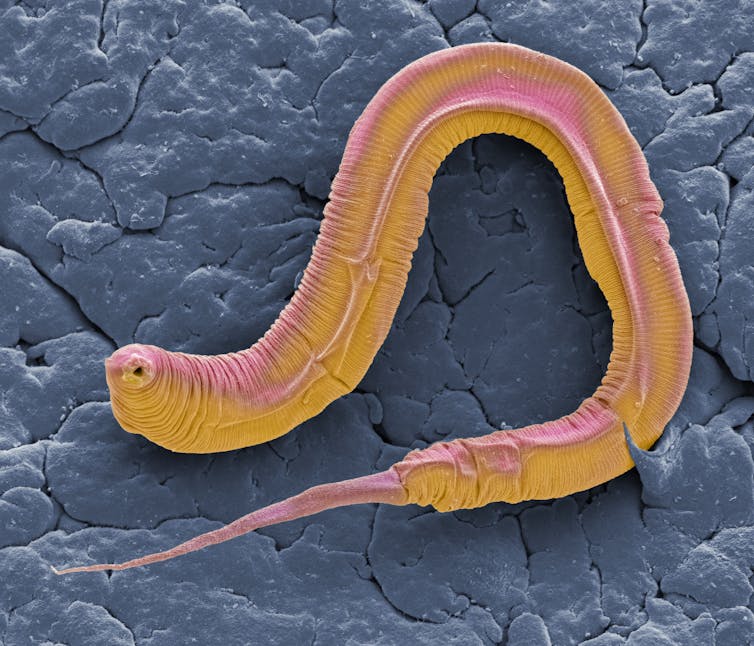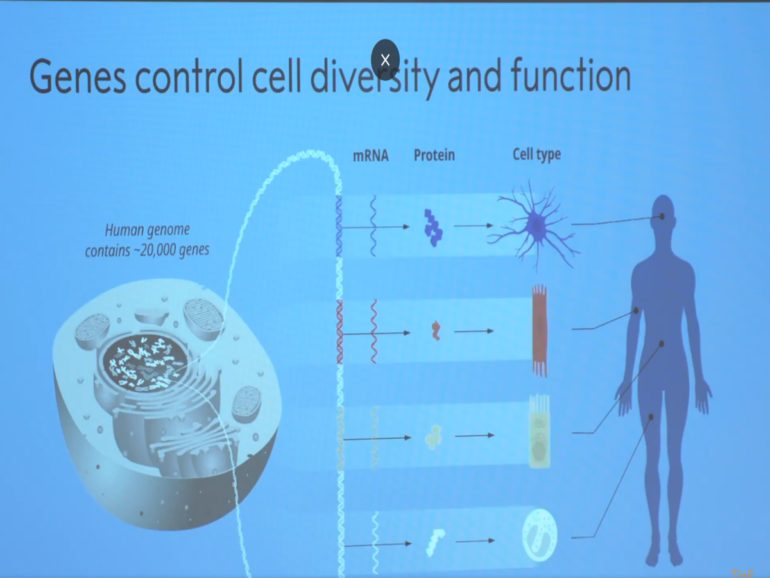The 2024 Nobel Prize in physiology or medicine goes to Victor Ambros and Gary Ruvkun for their discovery of microRNA, tiny biological molecules that tell the cells in your body what kind of cell to be by turning on and off certain genes.
The Conversation Weekly podcast caught up with Victor Ambros from his lab at the UMass Chan Medical School to learn more about the Nobel-winning research and what comes next. Below are edited excerpts from the podcast.
How did you start thinking about this fundamental question at the heart of the discovery of microRNA, about how cells get the instructions to do what they do?
The paper that described this discovery was published in 1993. In the late 1980s, we were working in the field of developmental biology, studying C. elegans as a model organism for animal development. We were using genetic approaches, where mutations that caused developmental abnormalities were then followed up to try to understand what the gene was that was mutated and what the gene product was.
It was well understood that proteins could mediate changes in gene expression as cells differentiate, divide.
We were not looking for the involvement of any sort of unexpected kind of molecular mechanisms. The fact that the microRNA was the product of this gene that was regulating this other gene in this context was a complete surprise.
There was no reason to postulate that there should be such regulators of gene expression. This is one of those examples where the expectations are that you’re going to find out about more complexity and nuance about mechanisms that we already know about.
But sometimes surprises emerge, and in fact, surprises emerge perhaps surprisingly often.

Colorized scanning electron microscope image of a C. elegans nematode worm – one of the most studied animals in biological research.
Steve Gschmeissner/Science Photo Library via Getty Images
These C. elegans worms, nematodes, is there something about them that allows you to work with their genetic material more easily? Why are they so key to this type of science?
C. elegans was developed as an experimental organism that people could use easily to, first, identify mutants and then study the development.
It only has about a thousand cells, and all those cells can be seen easily through a microscope in the living animal. But still it has all the various parts that are important to all animals: intestine, skin, muscles, a brain, sensory systems and complex behavior. So it’s quite an amazing system to study developmental processes and mechanisms really on the level of individual cells and what those cells do as they divide and differentiate during development.
Listen to Victor Ambros on The Conversation Weekly podcast.
You were looking at this lin-4 gene. What was your surprising discovery that led to this Nobel Prize?
In our lab, Rosalind Lee and Rhonda Feinbaum were working on this project for several years. This…


